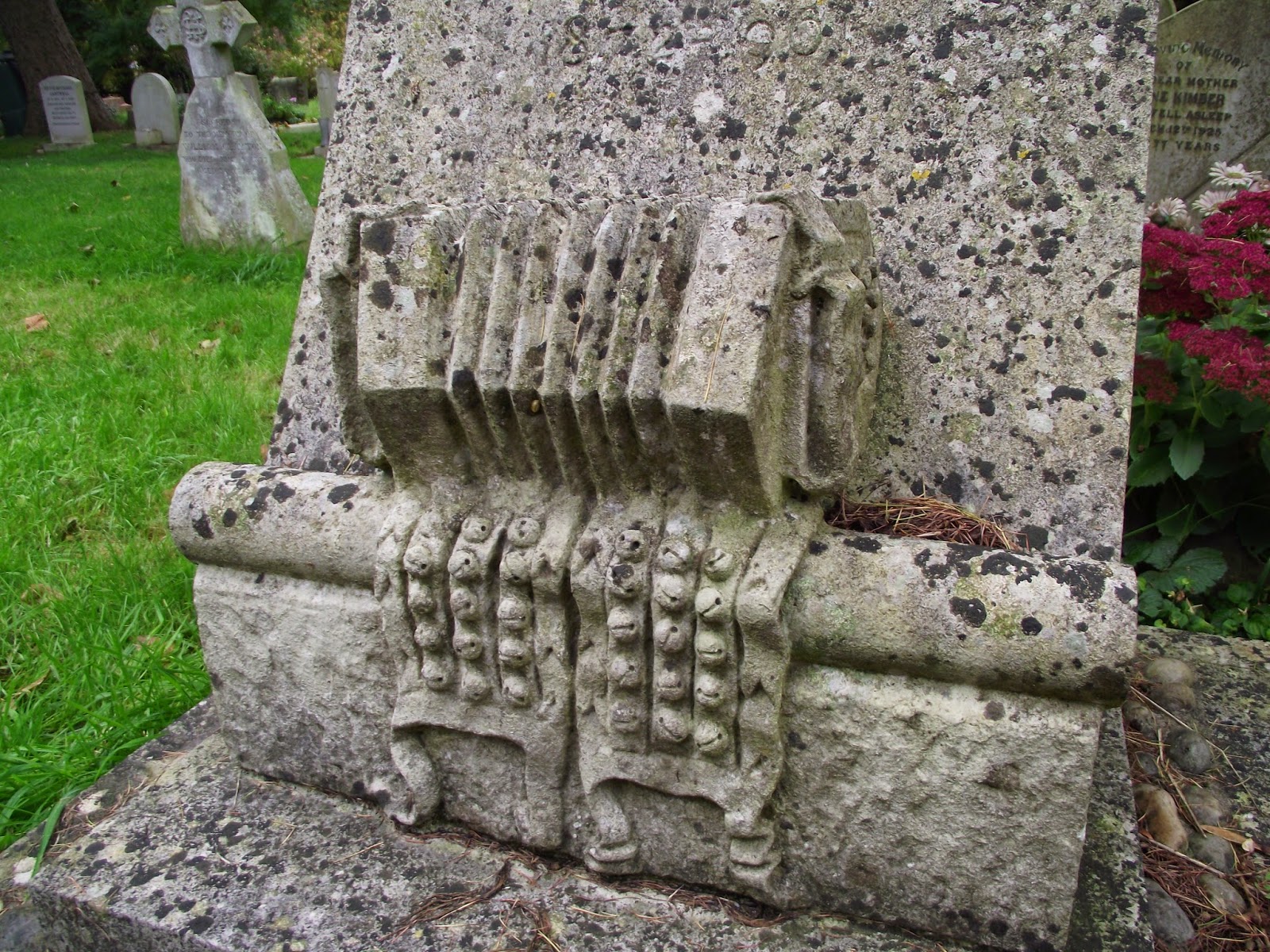It was perhaps inevitable
that as both an archaeologist and a long-time folky (and now morris dancer) I
would end up looking at the material culture of English folk traditions. I've
been fiddling around with this for the last year or so. Finally, a month ago, I
made arrangements to go and have a look at the various items related to
Cotswold morris dancing that are held in the Pitt-Rivers Museum, Oxford. People usually
associate the PRM with anthropological collections from across the world and
are often surprised that it also holds material from England. There was in fact
recently a really rather good project, called The Other Within, which looked at the various
English material in the its collections. It was this that first drew the
various morris ephemera to my attention. The project notes on these items were
written by Mike Heaney and are excellent pieces of work, effectively exploring
the provenance of these objects. However, from my archaeological perspective
they did not really engage with the physical objects themselves terribly
strongly. I'm really keen on an object biography approach for understanding
them, and obviously the work on provenance is incredibly useful in this
context, but its only half the story and does not really tackle the physical
objects themselves. It was this that drew me to the Pitt-Rivers. Over the next
couple of weeks I want to explore some of my initial thoughts and observations.
These are probably fairly inconsequential, but hopefully will flag up some of
the potential that can be derived from really exploring the physical dimensions
of the items.
Four pairs of bell pads made of red leather with green ribbon around the perimeter, gathered into small bows at the corners and midpoints of each side, and with light brown braid for leg ties. Each has twelve crotal bells arranged 4x3 on the three central vertical strips of leather. 200 x 149 mm



This description holds true of the other bell pads in this group. These were collected at intervals and were accessioned in 1903, 1917, 1945 and 2008. The all appear very similar; the earliest set (1903.57.1) have written on them “'Morris bell sets, made for the revival of Morris dances arranged for the Coronation festivities in Oxford 1902 (the dances were not held owning to the King's illness)”. Their similarity suggests that although collected at times they were intended as a set all for use in the 1902 festivities.
 |
| Label on reverse of 1903.57.1 |
But, a closer inspection
suggests that the matter is not quite as simple as it seems. The 1903, 1917 and
2008 sets certainly appear identical, both in terms of the material used, and
in the workmanship and constructional technique – looking at the reverse shows
the bells are all attached in the same way using similar string, types of knots
etc. It is hard to resist the conclusion that they are indeed a set, probably
made by the same individual and certainly using the same stock of materials.
When the pad is turned over there are other differences. First, although the way in which the bells are held onto the pad is similar in that a string is run through the loop shanks of all four bells on each strip of leather, there are some subtle distinctions, most notably there is more string left over after the knot is tied at the top and bottom. Similar differences in construction can be seen when comparing the way in which the ribbon that ties the pad to the leg are compared. On the 1945 pad the ribbon is attached neatly by vertical groups of cross-stitches (I may have the technical term incorrect). On the others, the ribbon is attached by a less systematic cluster of simple stitches (again, I don't have the technical terminology). A final difference can be seen in the way in which the green ribbon is attached to the leather backing. In the 1945 set, a red thread is used – this is distinct from the buff thread used to attach the ribbon on the same pad. In the other sets, the same buff thread is used to attach both the leg ribbons and the green ribbons.
 |
| Knots on rear of 1945.11.65 - note also red thread used to attach green ribbon |
 |
| Knots on rear of 1903.57.1.4 |
 |
| Stitching attaching leg ribbon on 1903 bell set |
 |
| Stitching attaching leg ribbon on 1945 bell set- gain, note use of red thread to attach the green ribbon |
 |
| Bells on 1903 bell set - note narrower flange and wider gap at base |
 |
| Bells on 1945 bell pad |
Overall, this does not
radically change the interpretation of this group of objects – they are broadly
similar in appearance and must have some kind of connection, although not as
direct as Heaney suggests. More generally though, this simple analysis does
show the value of returning to the objects themselves and subjecting them to a
more detailed examination.





























